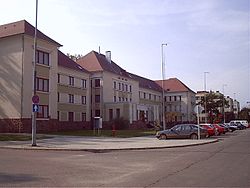Hungary - Slovakia


As of 2023, 9 border crossings are operating, 3 of which have passenger traffic.
Note that all of these railway lines were built in Austria-Hungary and became border crossings after the Treaty of Trianon in 1920. Some railway lines were dismantled as the borders cut them, so they didn't function as border crossings.
- Rajka - Rusovce (1891)
- Komárom - Komárno (1910), freight trains only, no passenger traffic since 14 December 2008
- Szob - Chľaba (1850)
- Nagybörzsöny - Pastovce (1885-1918, Narrow gauge)
- Hont - Šahy (1886-1945) (track dismantled)
- Ipolytarnóc - Kalonda, freight trains only, no passenger traffic since 2 February 2003
- Nógrádszakál - Bušince, freight trains only, no passenger traffic since 2 August 1992
- Somoskőújfalu - Fiľakovo (1871), freight trains only, no passenger traffic since 1 May 2011
- Bánréve - Lenartovce (1873), freight trains only, no passenger traffic since 12 December 2009
- Bánréve - Abovce (1874-1920), track dismantled
- Tornanádaska - Turňa nad Bodvou (1890) (track out of use, no traffic)
- Hidasnémeti - Kechnec (1860)
- Sátoraljaújhely - Slovenské Nové Mesto (1872), freight trains only, no passenger traffic
- Zemplénagárd - Pribeník (Canceled, Narrow gauge)



